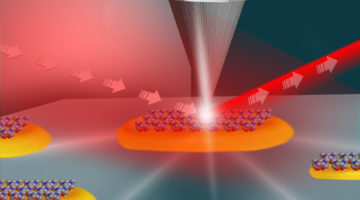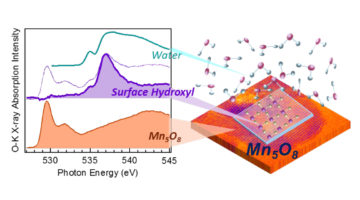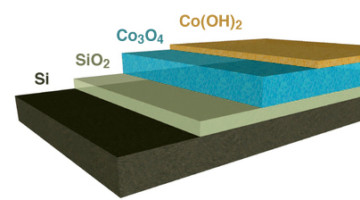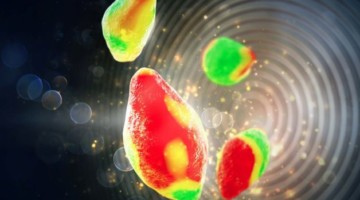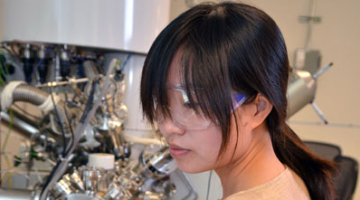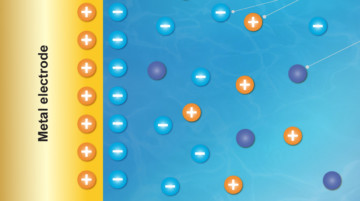A new study confirms that structural defects and jagged surfaces at the edges of platinum and gold nanoparticles are key hot spots for chemical reactivity. The experiments should help researchers customize the structural properties of catalysts to make them more effective in fostering chemical reactions. Read more »![]()
![]()
For Better Batteries, Open the Voltage Window
Electrochemical (battery) cells with aqueous electrolytes can be safe, inexpensive, and environmentally friendly, but they are limited by a narrow voltage window. X-ray absorption spectroscopy helps explain why an aqueous Na-ion system with Mn5O8 electrodes has a large voltage window and performs comparably to Li-ion batteries. Read more »
Multifunctional Catalyst Balances Stability and Efficiency
Scientists have found a way to engineer the atomic-scale chemical properties of a water-splitting catalyst for integration with a solar cell, and the result is a big boost to the stability and efficiency of artificial photosynthesis. Read more »![]()
![]()
Chemistry on the Edge: Study Pinpoints Most Active Areas of Reactions on Nanoscale Particles
Experiments confirm that structural defects at the periphery are key in catalyst function. The SINS study is an important step in chronicling how the atomic structure of nanoparticles impacts their function as catalysts in chemical reactions. Read more »
Scientists Trace ‘Poisoning’ in Chemical Reactions to the Atomic Scale
A team of researchers has employed a combination of measurements, including x-ray experiments at the ALS, to gather the most detailed information yet on problematic carbon-based deposits called “coke,” and to find ways to prevent its formation or reduce its effects. Read more »
Understanding Barriers to Higher-Capacity Rechargeable Batteries
Vanadyl phosphate can theoretically accept twice the number of lithium ions as battery materials currently in use. In practice, however, it doesn’t live up to expectations. New research at Beamline 6.3.1 using a variety of hard and soft x-ray spectroscopies helps zero in on why. Read more »
Industrial-Academic Collaboration Gives Nanoscale Insight into Batteries
An industrial collaboration between Hummingbird Scientific and a team of researchers from the ALS, SLAC, Berkeley Lab, Stanford University, and other institutions has resulted in a new x-ray microscopy platform that gives scientists the ability to image nanoscale changes inside lithium-ion battery particles in real time as they charge and discharge. Insights obtained from the imaging platform have already provided surprising new insights and could help researchers improve batteries for electric vehicles as well as smart phones, laptops, and other devices. Read more »![]()
Solar Cells Get Boost with Integration of Water-Splitting Catalyst onto Semiconductor
Scientists have found a way to engineer the atomic-scale chemical properties of a water-splitting catalyst for integration with a solar cell, and the result is a big boost to the stability and efficiency of artificial photosynthesis. Read more »
Tender X-Rays Map the Double-Layer Potential
In a first-of-its-kind experiment, ALS researchers demonstrated a new, direct way to study the inner workings of a phenomenon in chemistry known as an “electrochemical double layer” that forms where liquids meet solids—where battery fluid meets an electrode, for example. Read more »![]()
![]()
A Surface Treatment for Improving Fuel-Cell Cathodes
Solid-oxide fuel cells (SOFCs) are a promising path toward the “clean” conversion of chemical energy to electrical energy with little or no carbon dioxide emission. With the help of the ALS, researchers from MIT recently found a way to treat SOFC cathode surfaces so that they perform better and last longer. Read more »![]()
![]()
